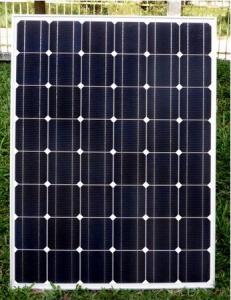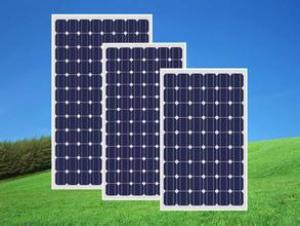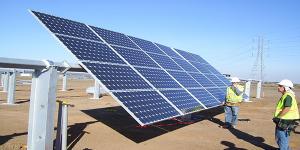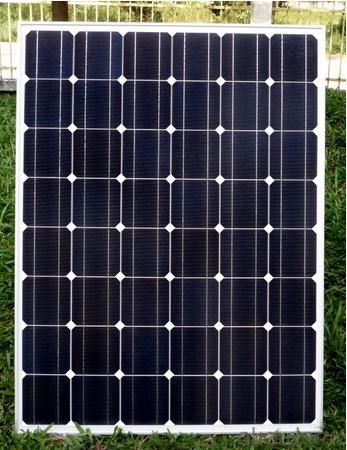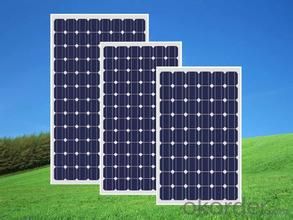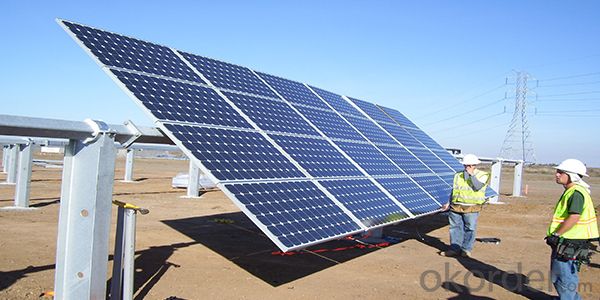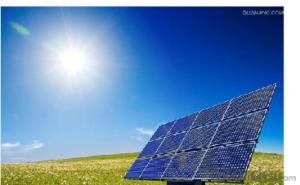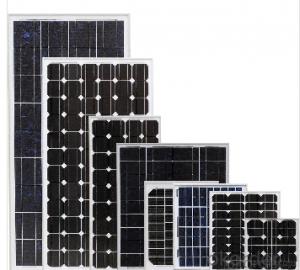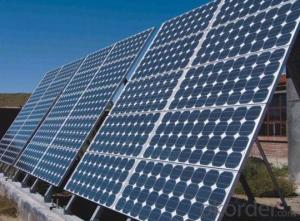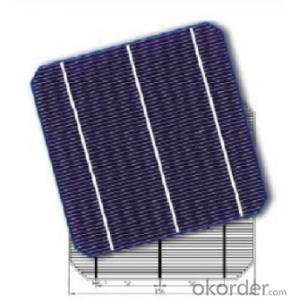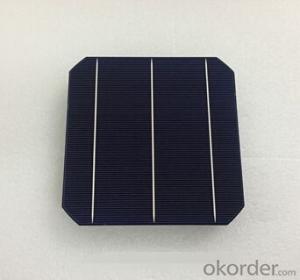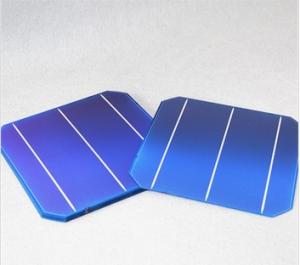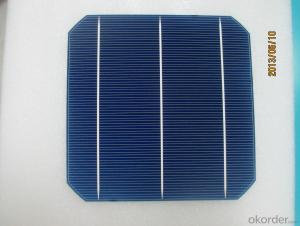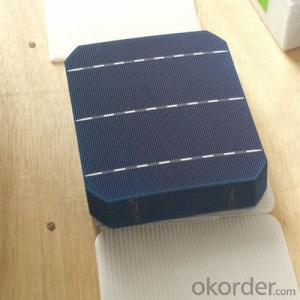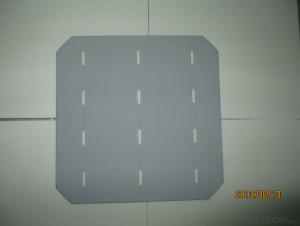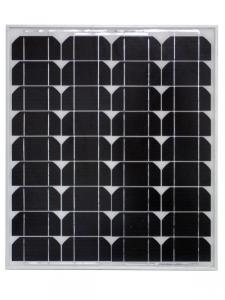Camel Solar Panels - A Grade 156x156 mm Monocrystalline Solar Cell for Sale
- Loading Port:
- Shanghai
- Payment Terms:
- TT or LC
- Min Order Qty:
- 1 PCS
- Supply Capability:
- 100000 PCS/month
OKorder Service Pledge
OKorder Financial Service
You Might Also Like
Solar Monocrystalline Series
Our designing philosophy is making solar product easy to use and convenient to maintain. We adhere to "develop inverter and controller" as our core technology, and built up solar product from 0.5W to 100KW into standard and mass production, meeting most customers' needs in this field.
Emerging, third generation solar technologies use advanced thin-film cells. They produce a relatively high-efficiency conversion for the low cost compared to other solar technologies. Also, high-cost, high-efficiency, and close-packed rectangular multi-junction (MJ) cells are preferably used in solar panels on spacecraft, as they offer the highest ratio of generated power per kilogram lifted into space. MJ-cells are compound semiconductors and made of gallium arsenide (GaAs) and other semiconductor materials. Another emerging PV technology using MJ-cells is concentrator photovoltaics (CPV).
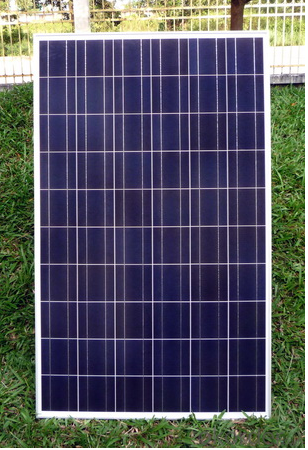
Feature
Long-term stability,reliability and performance
Low breakage rate
Color uniformaity
credit on customers
overseas storage
Physical characteristic
1. Rigorous quality control meets the highest international standards.
2. High-transmissivity low-iron tempered glass, strong aluminium frame.
3. Using UV-resistant silicon.
4. IS09001/14001/CE/TUV/UL
- Q: A solar panel facing the sun at noon in mid-summer receives more intensity of the light than when it is at horizontal. However, it can receives more total solar energy when it is at horizontal than when it is tilted during a long summer day. Regradless if it is shaded by building or trees. why is that so?
- That okorder /... it shows a graph and explains it better.
- Q: solar panels or light parts
- They make lights that have solar panels built into them. Due to the solar cell, they can sense when it gets dark and thus switch on the light automatically. Look at Northern Tool or Harbor Freight web sites for ideas.
- Q: Can solar panels be used in conjunction with a backup generator?
- Yes, solar panels can be used in conjunction with a backup generator. This setup is known as a hybrid solar power system and it allows for continuous power supply even during periods of low sunlight or when the solar panels are not generating enough electricity.
- Q: I really want a projector but i hear they use a lot of energy because of the lamp. I want a good one to watch movies and play games on. but i don't want one that is gonna kill the lighting bill.is there like a solar panel or something i could use for it. PLZ HELP.
- Do understand, that a solar panel is slow to pay for itself. Let's say your electric bill was $200 a month ($2400 a year). A solar system would cost perhaps $24,000 so you would actually have paid your first 0 years of electricity in advance when installing the panels. After that 0 years, you start to be ahead financially. It can still be a good idea, but it may not be the quick and cheap solution you were looking for.
- Q: For those solar panels that you install on your rooftops, do they generate electricity when it's cloudy? And if yes, how much electricity does it generate compared to sunny days? For example...like only 25% electricity generated compared to sunny days?
- No, silicon photovoltaics reacts to a very specific frequency of infrared light which matches the bandgap energy of it's outer electron shell. This frequency is reflected by clouds. However, thermal solar collectors such as evacuated tube collectors can function under cloudy skies albeit at a lower rate and there is at least one hybrid photovoltaic and thermal panel designed to take advantage of this.
- Q: I am doing a science fair project on solar panels, and I need four solar panels to conduct the experiment. I would only need the solar panels for a week. What type of solar panel should I get?
- Your USB power booster may be fragile and is likely expensive, so possibly you should get your 5 volts some other way. 3.7 volts plus a .2 volts D cell is 4.9 volts which is likely close enough for charging most anything with a USB charging cable. If bright sunlight is falling on your solar panel the battery voltage will go to about 5. volts charging at 700 MA, which is also likely acceptable, and will generally be less as part of the 700 ma is being used to charge something else. Also 300 ma may be more typical output of your solar panel even when the sun looks like it is bright. Over charging is unlikely unless the lithium cell has a lower amp-hour = AH rating than the Ni-cad (or nickel metal hydride NiMH 4 AH) D cell, but perhaps you should disconnect the solar panel, if it has been more than one bright sunny day since you charged something with a USB cable. If your battery reads over 5 volts with the solar panel unlighted or disconnected, you are likely to over charge either the lithium cell or the D cell. The PCB protected may complicate adding the D cell (probably not) so you may want to follow your original plan. Your solar panel may send as much as 9 volts to your PCB protection board, when the lithium cell does not need charging: Can the protection board tolerate 9 volts? Probably. If in doubt you can put either a .5 volt or .2 volt rechargeable D cell in series with the solar panel which reduces the input to your PCB protection by about .5 volts. That D cell will over charge, unless you replace it weekly, perhaps oftener. I think your PCB protection prevents over charging and cuts off the load if the lithium cell is discharged to an unsafe level or the load is demanding excessive current. Only the last is a possible problem = one of your USB cords may demand an amount of current that the PCB protection considers excessive. Your USB booster needs about twice as much current as the usb cord is supplying. You don't get the extra voltage by magic. Neil
- Q: What is the lifespan of solar panel batteries?
- The lifespan of solar panel batteries can vary depending on various factors such as the type of battery, its quality, and usage patterns. Generally, solar panel batteries are designed to last between 5 to 15 years. However, with proper maintenance and care, some batteries have been known to last even longer.
- Q: Any opinion on harbor freight solar panels ?
- Yes -- don't buy them. They are low quality solar panels, and the e-z kit they sell produces barely enough power for a lightbulb. The kit they commonly sell is a good child's science fair experiment/project, but do not expect to get your money's worth in solar power. If you are attempting to self-teach yourself on solar panels, this might be a good starting point, if not also a little expensive. But again, do not purchase Harbor Freight solar panels, or their e-z kit. If you are serious about getting into solar panels, there are distributors who will gladly talk to you about what kind of solar panels you will need for a regular house (hint: it is actually a pretty big set of solar panels for even a low power usage home).
- Q: Can solar panels be installed on oil or gas facilities?
- Yes, solar panels can be installed on oil or gas facilities. This practice is known as solar integration and is becoming increasingly common as oil and gas companies aim to reduce their carbon footprint and adopt renewable energy sources. By installing solar panels, these facilities can generate clean electricity and offset some of their energy consumption, leading to reduced greenhouse gas emissions and environmental impact.
- Q: Can solar panels be installed on a school or educational institution?
- Yes, solar panels can be installed on a school or educational institution. In fact, many schools and educational institutions are increasingly adopting solar energy as a sustainable and cost-effective solution for their power needs. Solar panels can be installed on rooftops, parking lots, or open areas to generate clean electricity, reduce carbon emissions, and provide educational opportunities for students to learn about renewable energy.
Send your message to us
Camel Solar Panels - A Grade 156x156 mm Monocrystalline Solar Cell for Sale
- Loading Port:
- Shanghai
- Payment Terms:
- TT or LC
- Min Order Qty:
- 1 PCS
- Supply Capability:
- 100000 PCS/month
OKorder Service Pledge
OKorder Financial Service
Similar products
Hot products
Hot Searches
